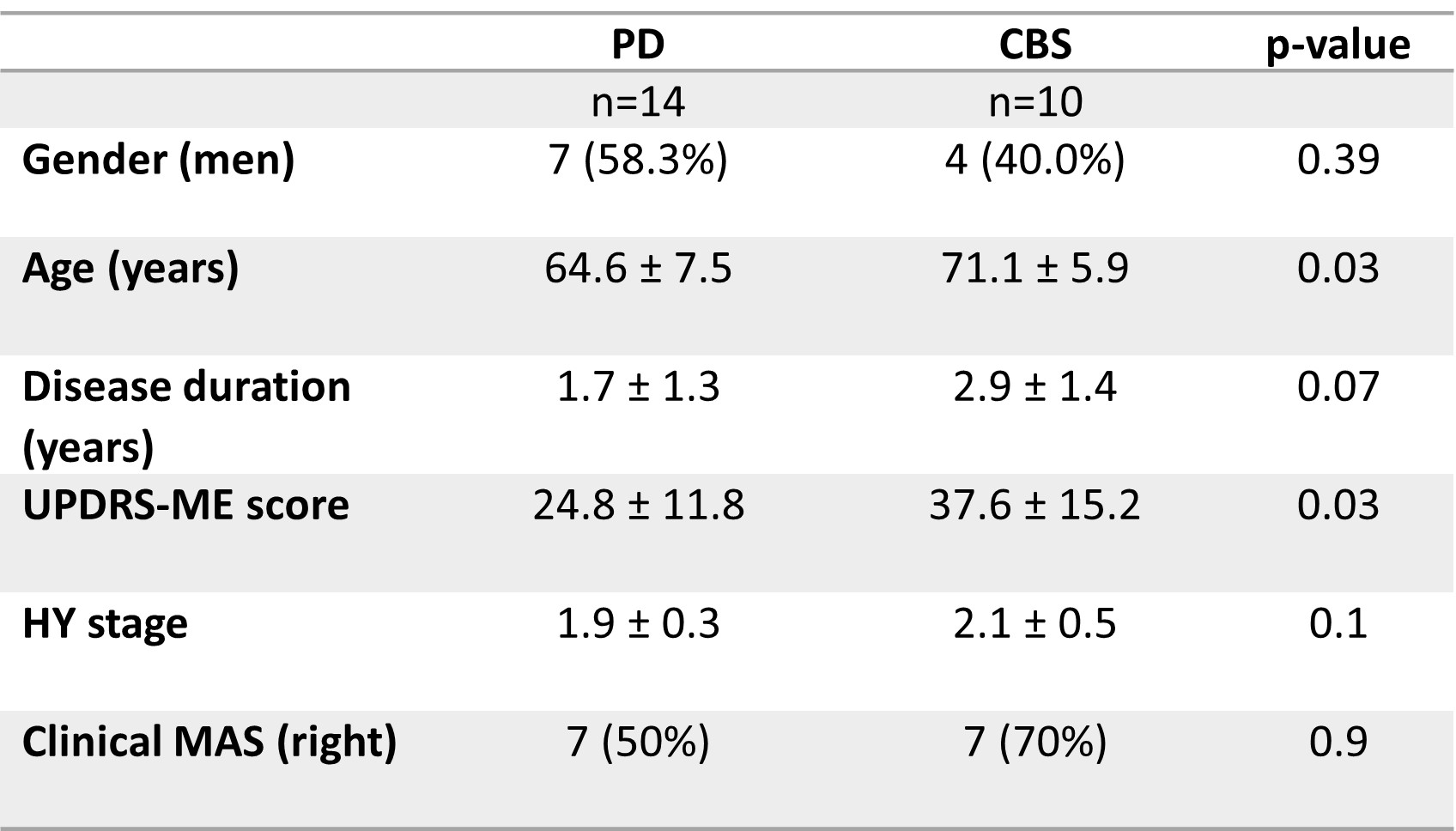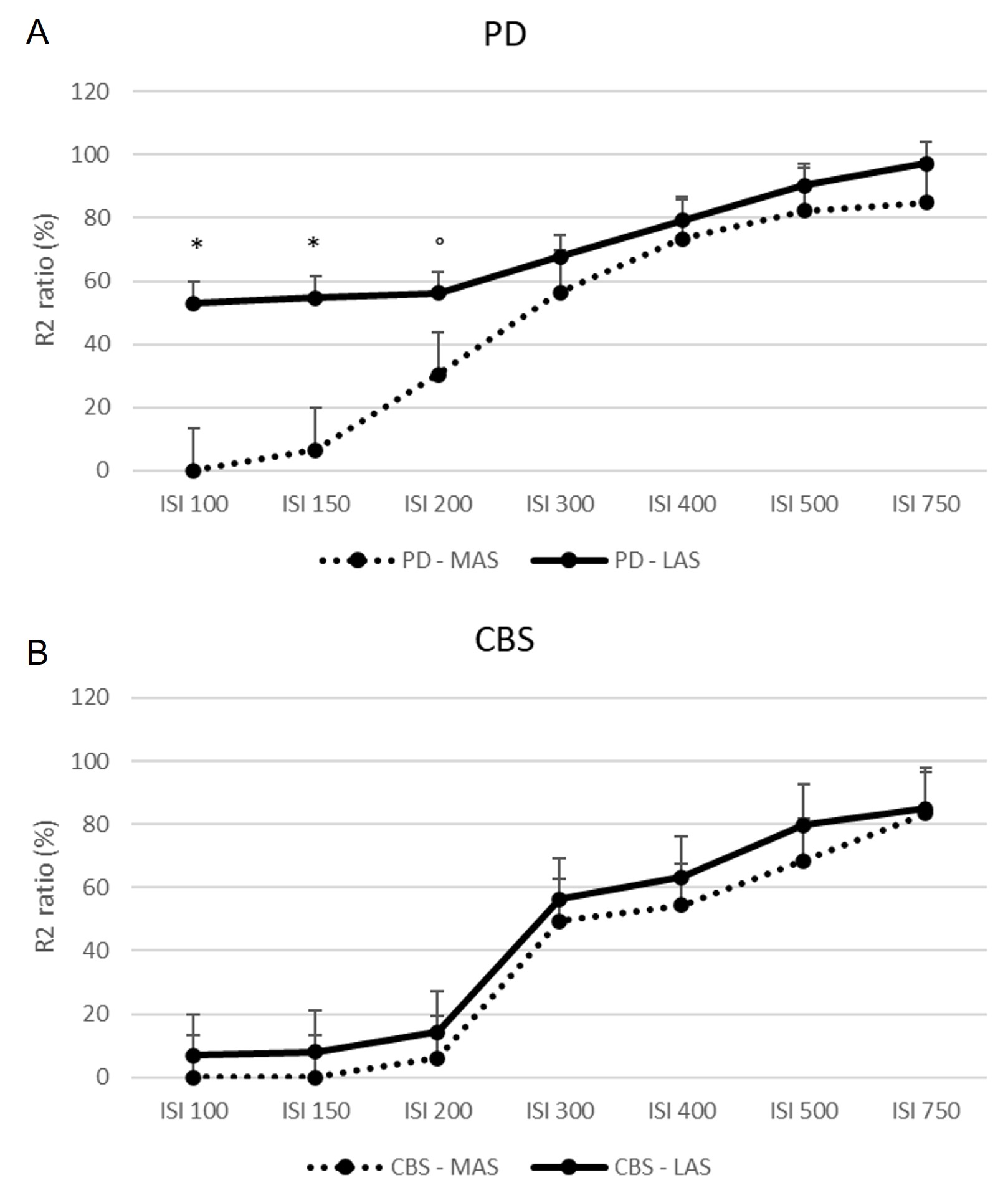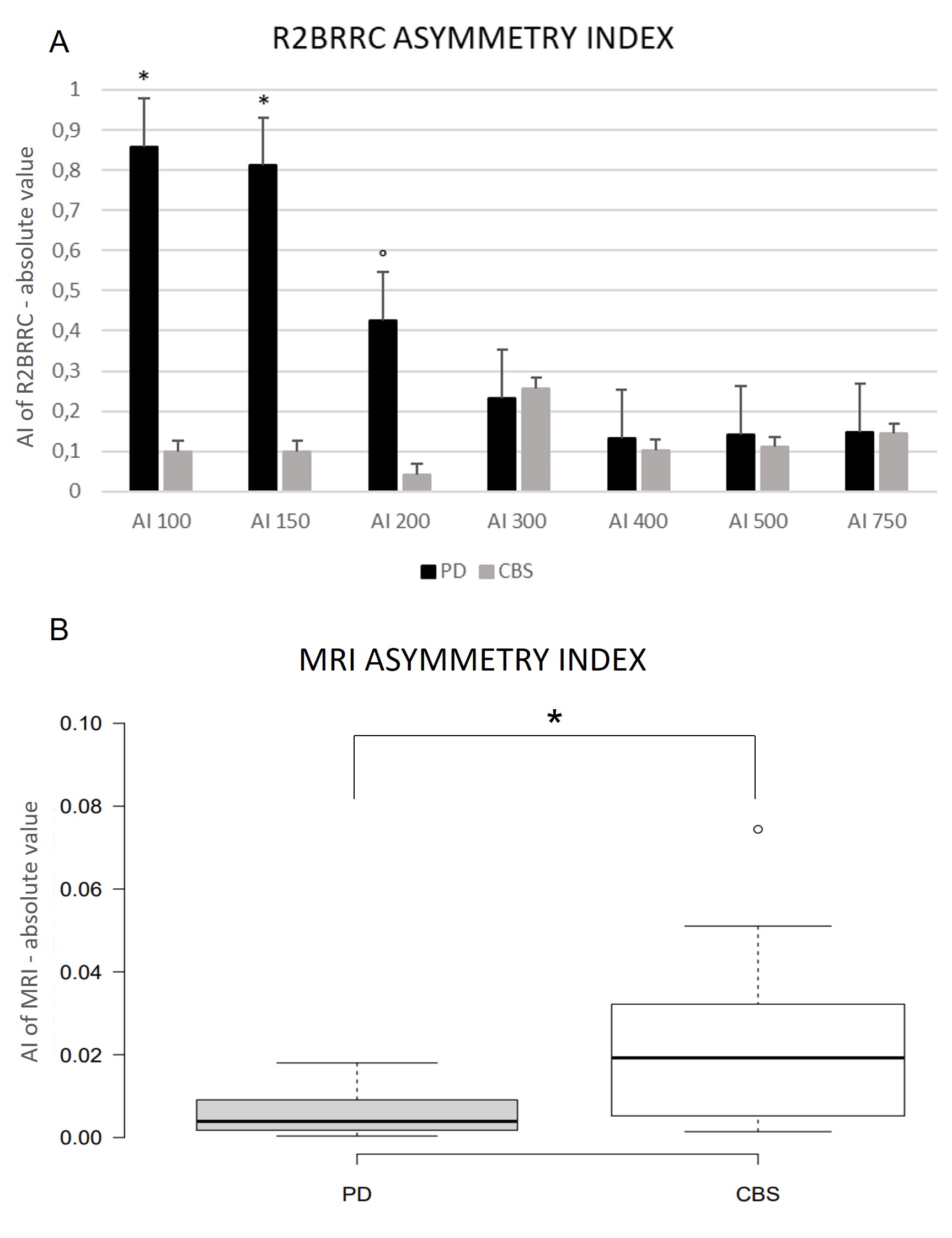Category: Other
Objective: To evaluate R2 Blink Reflex Recovery Cycle (R2BRRC) and cortical thickness in drug-naïve PD patients and in CBS patients for characterizing pathophysiological mechanisms underlying these conditions.
Background: Differential diagnosis between Parkinson’s Disease (PD) and Cortico-basal syndrome (CBS) could be challenging, especially at the early stage, due to the asymmetric onset of the diseases [1]. Despite the clinical overlap, the anatomical circuits involved in the occurrence of these disorders are different.
Method: Patients with diagnosis of PD and CBS were recruited. R2BRRC was evaluated bilaterally at interstimulus intervals (ISIs) of 100-150-200-300-400-500-750 ms. Asymmetry index (AI) of R2BRRC for each ISI was computed [2]. Patients underwent a structural brain MRI using a 3-D T1-weighted and cortical thickness and MRI-AI was calculated.
Results: Fourteen drug-naïve PD patients and 10 patients with early CBS diagnosis were enrolled (table 1). R2BRRC of PD patients showed an increased brainstem excitability for less affected side (LAS) stimulation at ISIs of 100 and 150 ms (p<0.001) compared to most affected side (MAS), whereas no differences between LAS and MAS were found in CBS. AI of R2BRRC at ISI of 100 ms showed significant difference between groups, being higher in PD (figure 1). CTh analysis showed significant differences between groups in hemisphere cortical volume contralateral to MAS, and, conversely, AI of MRI was significantly higher in CBS (figure 2).
Conclusion: Drug-naïve PD patients exhibited an asymmetric pattern of brainstem excitability, compared to CBS. Conversely, CBS patients showed an asymmetric pattern of cortical atrophy. This opposite pattern of neurophysiological and structural abnormalities involving cortical and subcortical brain structures could highlight the different pathophysiological mechanisms underlying these neurodegenerative disorders.
References: [1] Correia MM, Rittman T, Barnes CL, Coyle-Gilchrist IT, Ghosh B, Hughes LE, Rowe JB. Towards accurate and unbiased imaging-based differentiation of Parkinson’s disease, progressive supranuclear palsy and corticobasal syndrome. Brain Commun. 2020;2(1):fcaa051. doi: 10.1093/braincomms/fcaa051.
[2] Sciacca G, Mostile G, Disilvestro I, Donzuso G, Manna R, Portaro G, Rascunà C, Salomone S, Drago F, Nicoletti A, Zappia M. Asymmetry index of Blink Reflex Recovery Cycle differentiates Parkinson’s disease from atypical Parkinsonian syndromes. J Neurol. 2020 Jun;267(6):1859-1863. doi: 10.1007/s00415-020-09900-6.
To cite this abstract in AMA style:
G. Donzuso, G. Sciacca, A. Luca, C. Cicero, G. Mostile, A. Nicoletti, M. Zappia. Corticobasal syndrome and Parkinson’s disease at the beginning: usefulness of different asymmetrical patterns for early diagnosis. [abstract]. Mov Disord. 2022; 37 (suppl 2). https://www.mdsabstracts.org/abstract/corticobasal-syndrome-and-parkinsons-disease-at-the-beginning-usefulness-of-different-asymmetrical-patterns-for-early-diagnosis/. Accessed November 28, 2025.« Back to 2022 International Congress
MDS Abstracts - https://www.mdsabstracts.org/abstract/corticobasal-syndrome-and-parkinsons-disease-at-the-beginning-usefulness-of-different-asymmetrical-patterns-for-early-diagnosis/



